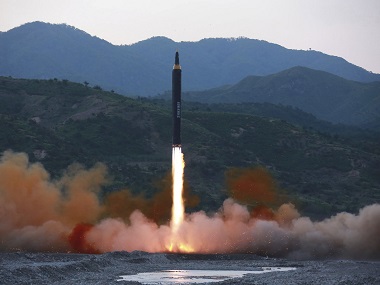Beijing: China and Japan said on Monday that no atmospheric radiation has been detected following North Korea’s most powerful nuclear test to date, amid fears of a leak from a “cave in” during the underground blast. North Korea on Sunday carried out a powerful nuclear test, claiming to have developed an advanced hydrogen bomb that could sit atop an intercontinental ballistic missile. [caption id=“attachment_3918691” align=“alignleft” width=“380”] Representational image. AP[/caption] China’s Ministry of Environmental Protection (MEP) said in a statement that all monitoring stations in China’s northeastern border areas in the provinces of Heilongjiang, Jilin, Liaoning and Shandong recorded radiation at normal levels. The MEP had on Sunday started monitoring the radiation levels in the border areas in an emergency response to the nuclear test. The monitoring data will be made public, it said. The China Earthquake Administration reported that a magnitude 6.3 earthquake struck the Democratic People’s Republic of Korea (DPRK) at 11.30 am on Sunday with an epicentre depth of zero kilometres, saying that it might have been caused by the explosion. The state-run Korea Central Television announced on Sunday that North Korea had successfully detonated an H-bomb, a hydrogen bomb that can be carried by an intercontinental ballistic missile. China’s foreign ministry has issued a statement expressing firm opposition to and strong condemnation of the test. Japan’s top government spokesman Yoshihide Suga told reporters in Tokyo that there was “nothing special detected from monitoring posts across the country”, nor from air samples taken by the Air Self-Defence Force after Sunday’s blast.
China and Japan said on Monday that no atmospheric radiation has been detected following North Korea’s most powerful nuclear test to date
Advertisement
End of Article


)




